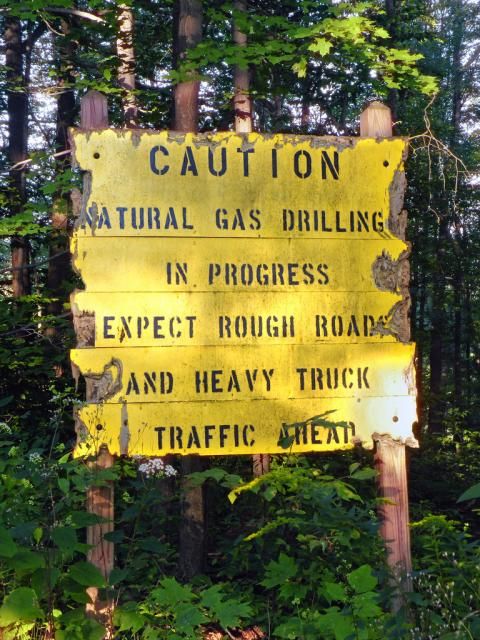
Answer: When they're drilling straight down, not sideways.
I admit, I was puzzled last week, when we got word of a company called Gastem getting approval from the New York State DEC to frack a couple of wells in Otsego County. (The announcement sparked a protest in Cherry Valley last Thursday.) Isn't the DEC holding off on issuing permits for hydrofracked wells until they finalize their regulations?
Basically, yes -- if you're talking about high-volume hydraulic fracturing with horizontal drilling, the new gas-prospecting technology that's fueling the gas rush on the Marcellus shale, and the technique most lay people are talking about when they use the shorthand slang word "fracking."
But that's not the only type of hydraulic fracturing, which is already in use (legally) in wells around New York State. A vertical well uses far less water than a horizontally-drilled well in the fracking process -- and thus produces less of the heavily contaminated wastewater that New Yorkers across the state fear.
I spoke this afternoon with DEC spokesman Yancey Roy, to see if he could shed some light on why Gastem was allowed to frac wells in Otsego County when the rest of the state is still waiting on the regulations to come through. The answer might be obvious to an industry insider, but apparently I wasn't the only reporter to be confused by Gastem's press release. Roy's response really highlights how technically challenging the issue of gas drilling is, and how much work the average non-engineer has to do just to stay on top of the debate.
Watershed Post: Why is Gastem allowed to frack these wells when the regulations on hydrofracking aren't finalized?
Yancey Roy: You weren't the first person to call about this. High-volume horizontal drilling is still under review. [Gastem's press release is] talking about vertical applications. You could apply for a permit tomorrow to do a vertical well.
Hydrofracking has been going on for decades. There are thousands of wells in New York State that have been hydrofracked. But what most people would think of as "conventional" hydrofracking is vertical wells. Importantly, hydrofracked wells that are vertical use a much smaller volume of water, typically about 80,000 gallons. What the state DEC is reviewing is hydrofracking using horizontal drilling, in which you'd be using millions of gallons of water. That's a key reason for the review.
Watershed Post: So are there similar concerns with hydrofracking a vertical well, in terms of possible water contamination, disposal of wastewater, that sort of thing?
YR: The fact that there's a much lower volume sort of changes the equation, in terms of wastewater. It's a much different operation.
WP: They still have to truck their wastewater out, though, right?
YR: They may be taking their water to Watertown -- off the top of my head, I don't know. There are treatment facilities that are pre-certified to treat wastewater.
Photo taken in Susquehannock State Forest, Potter County, Pennsylvania. Posted to Flickr under Creative Commons license by user Nicholas_T.












